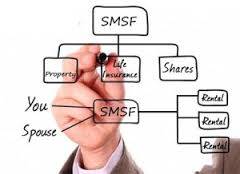Self managed superannuation funds (SMSFs) are private superannuation funds that are managed and controlled by the members. These funds are sometimes referred to as ‘DIY funds’ (although very few members of such funds find that they can indeed ‘do it themselves!’).
There may be up to 4 members in the fund; and contributions can be made to the fund by members and/ or their employers.
There are many benefits to starting an SMSF: there are also onerous responsibilities to undertake in being part of the administration and management one of such a fund – and prospective members should understand those responsibilities before becoming involved.
Why do people set up a self managed superannuation funds?
There are many advantages to consider before setting up self managed superannuation funds. The main advantages are outlined below:
- The members have control over the fund, including making investment decisions within the fund. This allows members and their financial adviser to tailor an investment strategy that suits individual circumstances and risk profile of the members within the constraints of the SIS legislation and regulations.
- Having an SMSF gives members a wide range of investment options, such as direct shares and direct property, including property used by their business. In restricted circumstances, the fund can purchase assets from members of the fund.
- In many cases, particularly for larger amounts of money, a self-managed super fund can be operated at a lower cost than would investing in retail super funds.
- An SMSF can be an effective estate planning tool. For example, a property held in the fund that the members wish to keep and pass on to other family members: by using a SMSF, the property does not necessarily have to be sold if a member dies; instead, it can be used to pay a pension, or it can be paid out as a lump sum payment in settlement of a death benefit.
What are some of the ‘onerous obligations’ taken on by a member of an SMSF?
Members of a self managed superannuation funds are also required to be trustees of the fund (or a director, if a corporate trustee is used). On establishing a SMSF, it is the responsibility of the trustee(s) of the fund to ensure that the fund complies with the law at all times. It is therefore important that trustees at least, understand their administration and reporting obligations – and seek professional help if necessary.
When establishing and maintaining a self managed superannuation fund you will need to look at a broad range of responsibilities, which include:
- Appointing trustees,
- Arranging a suitable trust deed,
- Lodging appropriate documents with the Tax Office,
- Setting an investment strategy for the fund (refer investment strategy link above),
- Investing the assets of the fund,
- Considering the insurance needs of the members,
- Maintaining proper records for the fund,
- Preparing annual accounts,
- Having the accounts audited,
- Submitting annual returns to the ATO, and
- Ensuring that the fund at all times complies with the relevant legislation.
There are severe penalties for trustees who fail to ensure that a super fund is properly administered. Therefore, it is advisable that, where necessary, you obtain the services of professionals who can assist you in ensuring the compliance of the fund.
What are some restrictions on the use of a SMSF?
A SMSF must be maintained ultimately to provide benefits to its members on retirement or death. It cannot be used as a means to gain a benefit before retirement.
Some of the activities a SMSF cannot engage in include:
- Carrying on a business (although there may be some exceptions to this: if considering this activity, seek professional advice),
- Acquire an asset from a member, relative of a member or an entity related to a member (except for business property, listed securities and certain other investments),
- Lend money to a member or relative of a member,
- Lease an asset to a member, other than business property,
- Invest more than 5 per cent of its assets in a private company or trust controlled by a member.
This means that you can not transfer your residential investment property into a SMSF. Your SMSF can however purchase an investment property from the open market, but you would not be allowed to rent it to yourself or a family member.
Where can you get advice about setting up a SMSF?
Self managed superannuation funds (SMSFs) are a specialised structure, controlled by specific regulatory provisions: the advisers at Continuum Financial Planners Pty Ltd are able to assist you in a number of aspects of the establishment and continuation of your own SMSF and/ or alternative superannuation strategies. We also have a network of consultants who can be accessed for other aspects: and as is the case with a number of our holistic client services, we can coordinate the services of all of the specialists required to achieve your goals in this regard. The process starts with a meeting with one of our advisers:
‘we listen, we understand; and we have solutions’ – that we deliver in personalised, professional wealth management advice that you can understand.
To arrange a meeting with one of our team, call our office on 07-34213456; or use the Contact Us website facility. We look forward to being of service to you.


